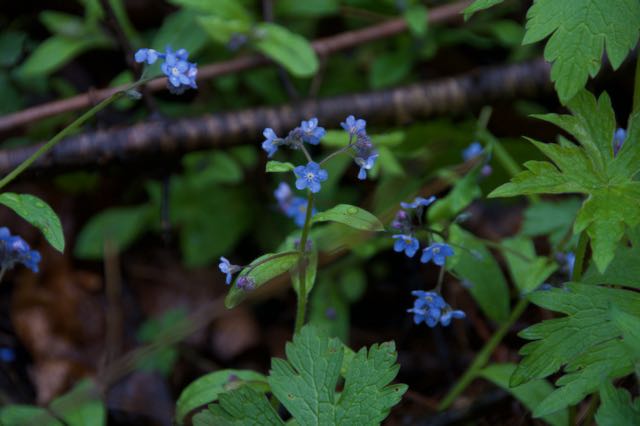Woodland Looking Like a Wreck

For the Birds
This week saw an explosion of spring flowers and activity across the squirrel farm. We hung the bird feeders as soon as we moved in a month ago but resisted the urge to fill them right away. We did not want the local wildlife to become dependent on handouts. Nearly every day, however, we saw bird arriving for the spring and checking out the empty feeders with obvious disappointment. This week we relented after neighbors told of the beautiful birds that frequently their backyards.
The response to our offerings was immediate and overwhelming. Unlike the house sparrows and chickadees that dominated our yard in Madison, visitors to the squirrel farm feeders include bluebirds, nuthatches, orioles, gold finches, rose breasted grosbeaks, downy woodpeckers, wood thrush, and hummingbirds. The brilliant colors of these beautiful birds remind me of a tropical zoo display more than any backyard I have ever known.The surrounding woods pay host to cardinals, bluejays, wrens, warblers, red winged blackbirds, red tail hawks and pileated woodpeckers.
Disaster Zone
On the other hand, the squirrel farm woodland is now officially a wreck. Shortly after moving in, I began cutting down buckthorn and treating the stumps with Garlon 4 to keep them from re-sprouting. At first, I looked for fairly open spots and began stacking the brush into compact piles for burning later. Trees begin to push sap up into trunk and out to branches as the days lengthen and weather warms. That upwelling of sap prevents herbicide from moving down into the roots where it does its damage.
So, once sap began to flow my tactics had to change, as well. Instead of killing the trees, my aim switched to preventing them from making seed. Instead of cutting trunks off neatly at the ground and treating the stumps, I started lopping trunks off around waist height and leaving them untreated. Though the tree remained alive, without branches, it could not flower and produce seed. Of course, that choice means I must return in late summer and cut those trunks and treat the stumps to kill the trees. But removing the tops prevents millions of seeds from entering the seed bank to plague the woodland for decades to come.
One retired guy working part time to clear five acres of buckthorn thicket in less than a month meant that all those tops were left where the dropped. The result is a woodland that resembles a battlefield. For the next couple months, it will be just me and the ticks turning that chaos into a scattering of well organized brush piles.

But wait, there’s more
Adding to my manmade disaster is that of invasive garlic mustard. The squirrel farm sports more than a half acre of dense stands along with scattered patches and pioneering individual plants. I filled a large construction bag of the plants each of the past three weeks. Most of the outlying individuals and small patches are removed and will not make seed in 2020. The large patches along the small ravine remain. With luck I will remove all or nearly all of them before the seed pods burst a month from now.
Joining the garlic mustard is another invasive plant more common in north country woodlands, the forget-me-not. With lovely little blue flowers, these common garden plants overrun woodlands, especially along river banks and other sunlit edges. The Baraboo hills are at the southern edge of the tension zone between northern woodland and sand country and the prairie and savanna plant communities that dominate the southern third of Wisconsin. Life in the tension zone means having the diversity of both native and invasive species. The infestation is currently confined to a 1,000 square foot area of woodland east of the road and south of the driveway. My challenge is to clear this patch in the next three days. Rain and warm weather will soon make the woodlands mosquito hell, so time is not on my side.
On the Up-Side
The squirrel farm is much more than a neglected woodland thicket. More amazing spring ephemeral wildflowers made their appearance this week. Yellow forest violets brightened the forest floor. Alternate-leaved dogwood, also called pagoda dogwood trees unfurled their leaves. Seedlings around their bases ensure that lovely mid-story trees will supply us with gorgeous flowers, while their dark purple berries will help woodland birds feed their young throughout the summer.
The oak seedlings and round saplings scattered across the property offer promise, hoping to compete with their more aggressive neighbors like cherry, walnut, locust and boxelder. It will up to me to place my thumb on the scale of the oaks, until there is enough surface fuel to begin prescribed burning in a few years. Once fire turns to the squirrel farm, the fire tolerant oaks and hickories will regain their dominance and those shade tolerant species like maples will retreat.
Mushrooms!
This week also brought our first morel mushroom harvest. First to arrive this week are the half-free morels. Neighbors claim the squirrel farm is a bountiful store of morels, the rains and warm weather we are getting this week make us truly hopeful.
